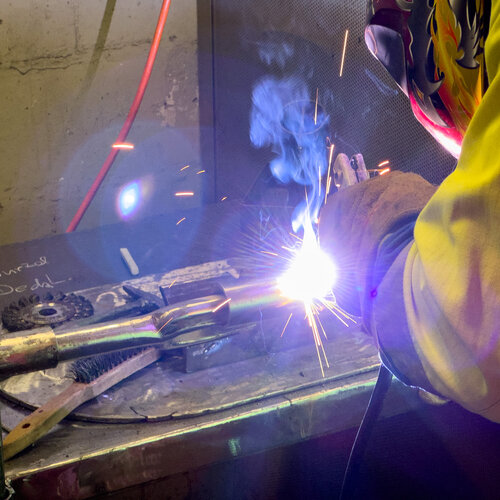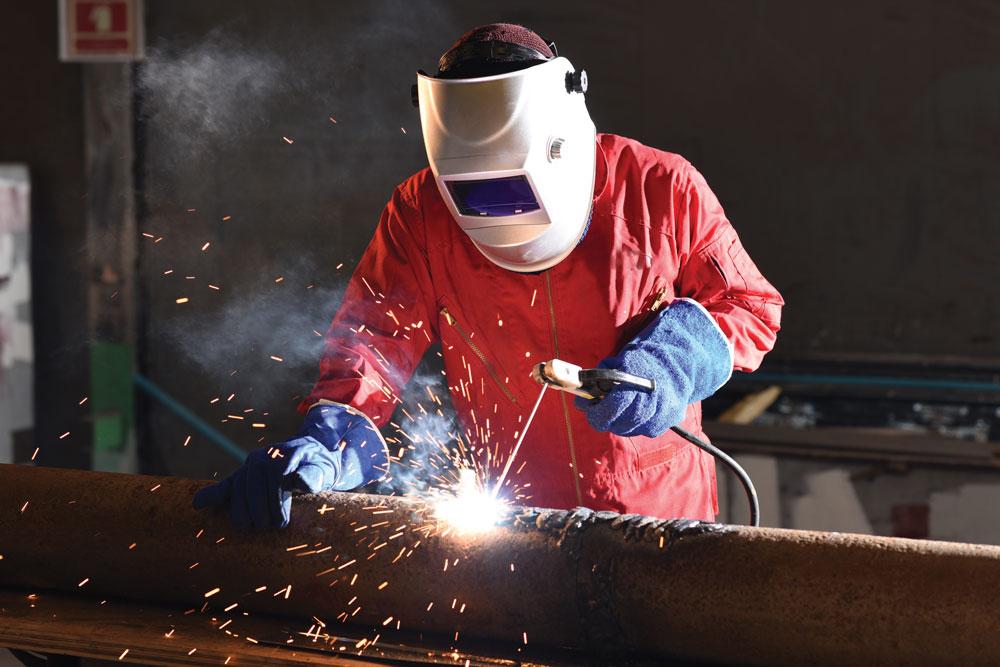Welding Inspection Racine: Guaranteeing Accuracy and Dependability in Every Weld
Welding Inspection Racine: Guaranteeing Accuracy and Dependability in Every Weld
Blog Article
Innovative Techniques to Fillet Weld Evaluation and Testing: Enhancing Weld Quality and Compliance Criteria
In the realm of welding, the quality and stability of fillet welds play a crucial duty in making certain the architectural strength and reliability of various commercial components. With the consistent drive for enhanced effectiveness and conformity with strict requirements, the exploration of innovative methods to fillet weld evaluation and testing has actually ended up being imperative.
Advanced Non-Destructive Screening Methods
Using cutting edge modern technologies, progressed non-destructive testing approaches play a vital duty in ensuring the stability and quality of fillet welds. These techniques, such as phased variety ultrasonic testing (PAUT) and magnetic particle screening (MPT), offer thorough insights right into the weld's interior structure without creating any damage to the product. PAUT, for instance, uses several ultrasonic components to check the weld from various angles, supplying a thorough visualization of prospective defects like lack of combination or cracks.
Similarly, MPT is reliable in discovering surface-breaking flaws by using a magnetic field and iron fragments to the weld area. This technique is especially beneficial for recognizing stoppages that might compromise the weld's strength. By employing these innovative non-destructive testing methods, weld assessors can properly analyze the high quality of fillet welds, guaranteeing compliance with industry standards and laws. The capability to discover flaws early not just boosts weld top quality however also stops expensive rework or failures in architectural stability, underlining the importance of these innovative screening approaches in welding assessments.
Robotics and Automation in Inspection
The assimilation of robotics and automation has actually revolutionized the inspection procedure for fillet welds, improving effectiveness and accuracy in high quality evaluation. Robotics provide specific control and repeatability in inspecting welds, guaranteeing trusted and regular results. Automated systems can be set to comply with certain examination courses, guaranteeing detailed coverage of welds and reducing the danger of human mistake.
Robotic examination systems furnished with innovative sensing units can spot and determine weld functions with high accuracy, giving in-depth data for analysis. These systems can recognize issues such as splits, lack of blend, and porosity, enabling timely rehabilitative activities to be taken. Furthermore, robotics and automation enable real-time information collection and evaluation, providing prompt feedback to operators and helping with quick decision-making procedures.
Furthermore, using robotics and automation in fillet weld evaluation improves overall productivity by lowering examination times and enhancing examination throughput. By improving the evaluation procedure, makers can ensure weld top quality and compliance standards are fulfilled effectively, eventually resulting in set you back savings and improved item high quality.
Making Use Of Expert System for Evaluation
Expert system plays a pivotal function in improving the performance and accuracy of evaluation in fillet weld assessment procedures. By using the power of AI, assessors can streamline the evaluation of weld top quality and compliance standards, bring about more accurate and reputable results. AI algorithms can quickly refine huge amounts of data from weld assessments, discovering flaws or disparities that might be challenging to determine with the naked eye. This sophisticated innovation enables real-time tracking of weld top quality, enabling instant restorative activities to be taken if any type of issues are spotted.
In addition, AI systems can gain from past inspection information, constantly improving their capacity to identify possible flaws and inconsistencies in fillet welds. This flexible learning ability enhances the total quality assurance procedure, lowering the probability of human mistake and making certain that welds satisfy the needed requirements. By integrating man-made knowledge into fillet weld analysis, markets can achieve higher levels of performance, consistency, and conformity in their examination techniques.
Portable Equipment for On-Site Evaluation
 Enhancing field inspection efficiency, the fostering of portable tools revolutionizes on-site analysis processes for fillet welds. These devices offer versatility and convenience, allowing assessors to conduct complete exams in various areas, consisting of remote or difficult settings. Portable tools such as ultrasonic testing tools, magnetic particle evaluation tools, and digital radiography systems offer real-time information and high-resolution imaging capacities, making it possible for fast decision-making and prompt comments on weld top quality.
Enhancing field inspection efficiency, the fostering of portable tools revolutionizes on-site analysis processes for fillet welds. These devices offer versatility and convenience, allowing assessors to conduct complete exams in various areas, consisting of remote or difficult settings. Portable tools such as ultrasonic testing tools, magnetic particle evaluation tools, and digital radiography systems offer real-time information and high-resolution imaging capacities, making it possible for fast decision-making and prompt comments on weld top quality.One considerable benefit of mobile devices is their capability to simplify examination procedures, decreasing downtime and improving general productivity. Examiners can conveniently deliver these tools to various job websites, getting rid of the requirement for carrying heavy equipment or components to off-site facilities. Furthermore, the portability of these devices advertises cost-effectiveness by decreasing transportation expenses and increasing inspection timelines.
Furthermore, making use of portable tools for on-site inspection advertises positive quality assurance measures, as assessors can promptly recognize and resolve any type of check possible welding problems or disparities. By incorporating these innovative technologies right into on-site evaluation techniques, welding specialists can make sure conformity with market criteria and boost weld high quality, ultimately resulting in improved structural honesty and security in numerous welding applications.
Assimilation of Data Monitoring Systems
Having actually enhanced on-site examination procedures through the use of mobile devices, the next phase includes the smooth combination of data administration systems to even more enhance effectiveness and data evaluation capacities in fillet weld inspection and screening. Welding Inspection Racine. By integrating information management systems into the examination process, organizations can simplify data collection, storage, and evaluation. This combination permits real-time surveillance of weld quality, prompt identification of issues, and prompt decision-making to fix any type of issues that may arise during the evaluation process
The integration of information monitoring useful content systems enables smooth communication between different stakeholders included in the assessment process, promoting partnership and enhancing total quality control procedures. Eventually, the assimilation of information administration systems serves to boost the standards of fillet weld examination and testing, guaranteeing conformity with sector laws and improving weld top quality.
Verdict
To conclude, innovative techniques to fillet weld evaluation and screening have dramatically improved weld high quality and conformity criteria. Advanced non-destructive screening methods, robotics, automation, expert system, mobile devices, and information management systems have actually revolutionized the method weld examinations are performed. By using these modern technologies, industries can ensure that welds meet the called for quality standards and policies, ultimately improving overall effectiveness and safety and security in welding procedures.

By utilizing these advanced see this here non-destructive screening strategies, weld inspectors can properly analyze the high quality of fillet welds, making sure conformity with market requirements and guidelines. Portable devices such as ultrasonic screening devices, magnetic fragment examination equipment, and electronic radiography systems supply real-time information and high-resolution imaging capabilities, allowing fast decision-making and prompt responses on weld quality.
Having actually enhanced on-site inspection processes with the application of mobile tools, the next stage involves the smooth integration of information management systems to even more enhance performance and information evaluation capabilities in fillet weld assessment and screening (Welding Inspection Racine). Eventually, the assimilation of information management systems offers to elevate the standards of fillet weld assessment and screening, making sure compliance with sector policies and improving weld quality
 In conclusion, innovative approaches to fillet weld evaluation and testing have actually considerably improved weld quality and conformity criteria.
In conclusion, innovative approaches to fillet weld evaluation and testing have actually considerably improved weld quality and conformity criteria.Report this page